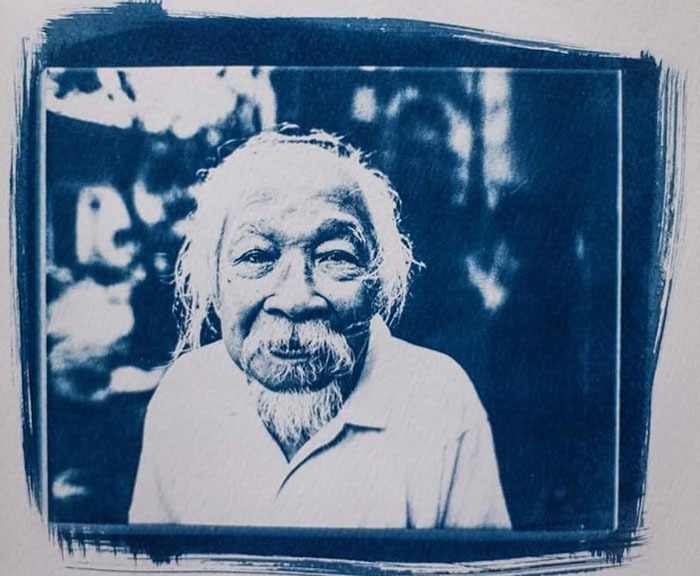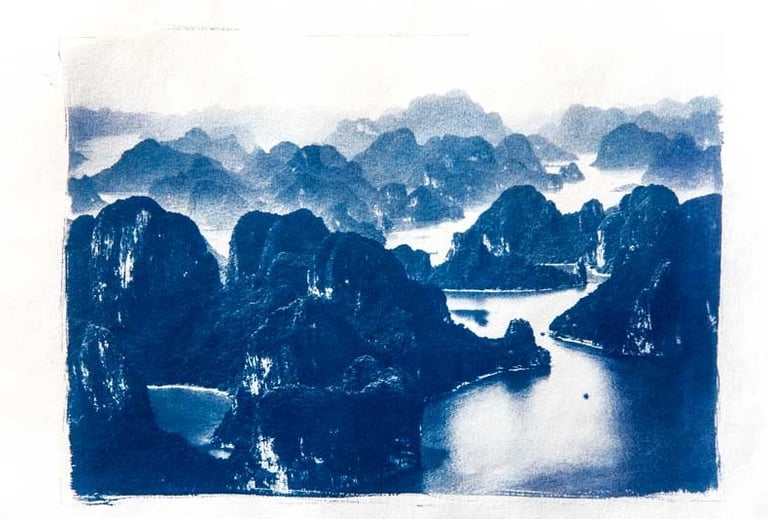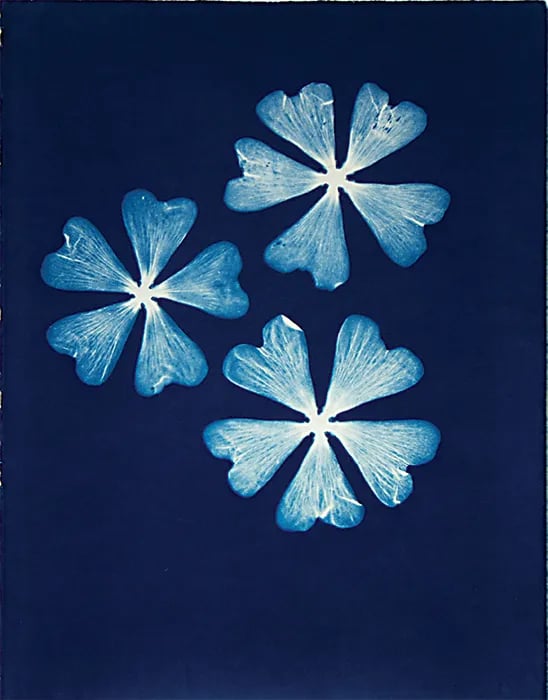Cyanotype: A Blueprint to the Past
Cyanotype, an early photographic process invented in the 19th century, uses sunlight to create beautiful blue prints. Originally developed for botanical illustrations, it later became popular for engineering blueprints. Today, cyanotype continues to be a beloved art form, offering a unique aesthetic and a simple process that is accessible to all.
EXPERIENCE STORYTELLING


Cyanotype by @Julie Vola
A Brief History of a Timeless Process
Imagine capturing the world in a deep, ethereal blue. That's the magic of cyanotype, one of the earliest photographic processes. Invented in the 19th century by Sir John Herschel, a renowned astronomer, cyanotype offered a simpler, more durable alternative to the silver-based photography of the time.
A Serendipitous Discovery
Herschel's journey to cyanotype began with a helping hand. He assisted William Fox Talbot, a pioneer in photography, with stabilizing his fragile silver-based images. This experience sparked a creative spark, leading Herschel to experiment with iron salts. The result was a process that yielded a beautiful, blue-hued image.


The Cyanotype Process: A Sun-Kissed Art
The cyanotype process is surprisingly straightforward. Paper is treated with a mixture of iron salts, then exposed to a negative image under sunlight. The sun's ultraviolet rays trigger a chemical reaction, leaving behind a blue print of the original image. A quick wash with water reveals the final artwork.
From Botany to Blueprints
Initially, cyanotype was primarily used for botanical illustrations. The process's ability to capture intricate details and its durability made it a popular choice for documenting plant life. However, cyanotype soon found a broader application in engineering. Its high contrast and ability to reproduce technical drawings led to its adoption as the basis for the blueprint process.
A Timeless Art Form
Today, cyanotype continues to captivate artists and enthusiasts alike. Its unique aesthetic and the simplicity of the process make it accessible to both beginners and experienced photographers. Whether you're interested in creating botanical prints, abstract designs, or even experimenting with cyanotype on fabric, this historic process offers a wealth of creative possibilities.


